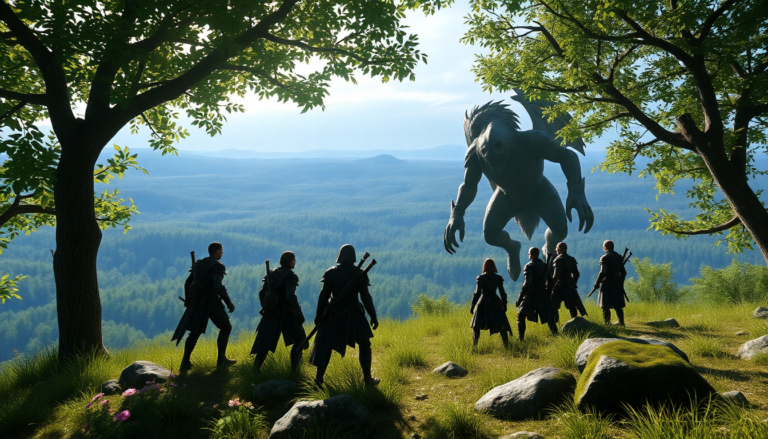Argomenti trattati
Understanding the hype around Clair Obscur: Expedition 33
Clair Obscur: Expedition 33 has taken the gaming community by storm. Enthusiasts are buzzing about whether it truly is the best JRPG in recent years or just another title in a saturated market. Opinions are divided: some hail it as a beacon of hope for the genre, while others question its revolutionary status. This article delves into what Clair Obscur represents and whether it deserves its place among the giants of JRPG history.
The roots of JRPGs and the evolution of the genre
To grasp the significance of Clair Obscur, we must first explore the origins of Japanese Role-Playing Games (JRPGs). The term itself became popular after the release of Dragon Quest in 1986, distinguishing these games from their Western counterparts that followed different gameplay mechanics. Early JRPGs were characterized by turn-based combat, rich narratives, and a party system composed of distinct characters, all set within expansive worlds.
Over the years, the genre has undergone significant transformations. Developers have experimented with real-time combat mechanics, as seen in franchises like Tales and Star Ocean, while others have ventured into strategic gameplay with titles like Fire Emblem. Despite these innovations, the classic formula pioneered by Dragon Quest has remained a benchmark, leading to a period of stagnation in the early 2000s.
What defines a JRPG in today’s landscape?
With the ever-evolving nature of gaming, the definition of what constitutes a JRPG has become increasingly complex. While the genre traditionally revolved around specific gameplay elements, contemporary titles often blur these lines. For instance, recent games like Chained Echoes, developed in Germany, have embraced the JRPG style while stepping away from Japanese development roots. This raises the question: can a game still be considered a JRPG if it deviates from traditional characteristics?
Clair Obscur: Expedition 33 embodies various traits that align it with the JRPG genre. It offers a story-driven experience, a limited yet diverse cast of characters, and turn-based combat that, while not entirely random, pays homage to classic systems. More importantly, the developers drew inspiration from beloved titles like Persona and Final Fantasy, creating a nostalgic yet fresh experience.
The innovative aspects of Clair Obscur
What sets Clair Obscur apart is its unique blend of genres and influences. While it firmly establishes itself as a JRPG, it incorporates elements from other game styles, including nuances reminiscent of soulslike games. The combat system, focused on timing and strategy, elevates the gameplay experience, providing depth beyond mere turn-based mechanics.
Moreover, the game’s narrative is influenced by acclaimed works, such as Alain Damasio’s award-winning novel, La Horde du Contrevent. This literary inspiration contributes to a rich storytelling experience, enhancing player engagement. The combination of artistic vision and gameplay innovation positions Clair Obscur as not just another JRPG, but a significant contribution to the genre’s evolution.
The importance of experimentation in JRPGs
As we reflect on the trajectory of JRPGs, it becomes clear that innovation is crucial for the genre’s growth. Clair Obscur serves as a reminder that while nostalgia plays a vital role in game development, pushing boundaries and exploring new ideas are equally necessary. The developers at Sandfall Interactive have successfully crafted a title that honors the past while paving the way for future explorations.
Ultimately, the success of Clair Obscur: Expedition 33 should not stifle creativity within the genre. Rather, it should inspire developers to continue experimenting with gameplay mechanics and narrative techniques, ensuring that JRPGs remain relevant and engaging for both veteran fans and newcomers alike.
Looking ahead: the future of JRPGs post-Clair Obscur
As the gaming landscape continues to evolve, the impact of Clair Obscur: Expedition 33 will likely be felt for years to come. It stands as a testament to the potential for growth within the genre, encouraging developers to honor the classic elements while daring to explore new horizons. The key takeaway is that while Clair Obscur has set a high bar, it is essential for the JRPG genre to embrace diversity and innovation to thrive.
In conclusion, the journey of JRPGs is far from over. With titles like Clair Obscur leading the charge, we eagerly anticipate what the future holds for this beloved genre. Will the next wave of JRPGs follow in its footsteps, or will they carve out entirely new paths? Only time will tell, but one thing is certain: the adventure is just beginning.

